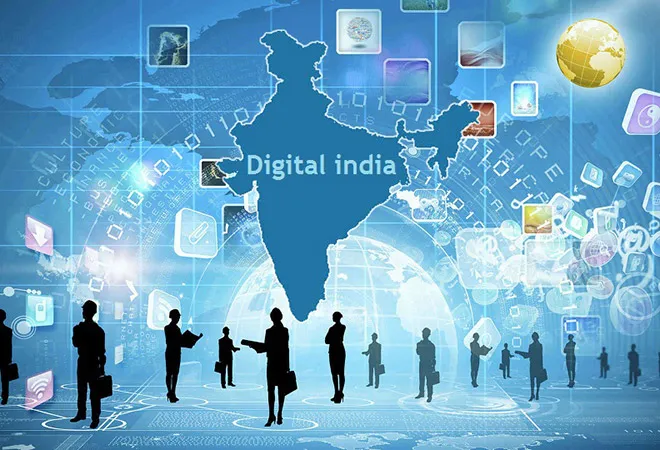India’s Service Sector Grew By 60% In The Last Two Years: Piyush Goyal.
How Is The Service Sector in India Expanding?

India’s service sector grew by 60% in the last two years: Piyush Goyal.
According to Piyush Goyal, minister of commerce, India’s services industry has grown by more than 60% in the previous two years.
“About 60% increase has been seen in the services industry over the past two years. Its trade figures in 2021 were 206 billion, but they are currently over 320 billion, he pointed out.
The most significant increase in trade numbers over time has been seen in the services sector. India exported $206 billion worth of services in total in 2020–21; this amount increased to the projected $250 billion in 2021–22 and is anticipated to reach $325 billion in 2022–23. The final trade figures for 2022–2023 have not yet been released.
Experts in the trading sector predict that trade in the services sector will increase to $400 billion or more in the upcoming fiscal year. “We anticipate the services sector surpassing $400 billion in the upcoming fiscal year. We have every reason to be positive because the services industry has experienced a significant expansion, according to Abhay Sinha, director general of the Services Export Promotion Council (SEPC).
India’s services industry is positioned to grow at a solid rate in the following years because of continuing changes in the areas of lowering trade barriers, simplifying FDI requirements, and deregulation.
How is the service sector in India expanding?
There are several reasons why India’s service sector has been expanding consistently over time. The presence of a trained workforce is one of the main elements promoting the expansion of India’s service sector. India has a vast labour force that is educated and talented, especially in the IT industry.
As a result, India is now a desirable location for service outsourcing and offshoring. Several international firms are opening offices and operations in India to exploit the talented workforce and affordable labour.

The development of technology and the widespread usage of the internet are further significant factors. This has aided in the expansion of numerous service sectors like IT, e-commerce, and digital marketing.
The service industry in India has quickly embraced new technology, increasing its effectiveness and lowering its costs. The expansion of digitalisation has also made it simpler for companies to offer services remotely, accelerating the sector’s growth.
The Indian government has significantly aided the development of the service sector. The government has implemented several policies and programmes to promote entrepreneurship, foreign investment, and infrastructure improvement. Also, to simplify business operations in the nation, the government has implemented measures to streamline corporate rules and cut back on bureaucracy.
The expansion of the middle class in India and the resulting changes in lives and tastes have raised the demand for goods and services, including healthcare, education, and entertainment. As a result, there is now a sizable market for service providers, which has fueled the expansion of numerous service industries.
Several reasons, such as the availability of qualified labour, technology improvements, government initiatives, and shifting consumer tastes, have contributed to the expansion of India’s service sector. The industry is anticipated to keep expanding in the years to come, presenting new business opportunities and assisting in the general economic growth of the nation.
The IT sector is one of India’s most important service industries. India’s IT sector has expanded quickly, becoming a world leader in software development and IT services. A skilled labour force, reasonable labour prices, and a supportive business climate drive the sector. Many international firms have established offices to benefit from the talent pool of IT professionals in India.
The healthcare sector is another one of India’s expanding service industries. There is a great need for healthcare services in India due to the growth in lifestyle diseases, an ageing population, and increased demand for high-quality healthcare. The Ayushman Bharat Plan, which aims to provide healthcare coverage to millions of Indians, is one of the measures the government has launched to promote healthcare.
Another rapidly expanding service sector in India is the e-commerce sector. A sizable user base, rising internet usage, and the development of digital payments propel the industry. Many Indian e-commerce firms, like Flipkart and Paytm, have become significant players in the international e-commerce business.

Another essential contributor to India’s service economy is the hospitality and tourist sectors. In India, domestic and foreign tourism has increased due to the country’s rich cultural legacy, diverse terrain, and expanding middle class. The Incredible India campaign and the Swadesh Darshan Program are only two of the government’s recent tourism-promoting initiatives.
Nevertheless, India’s service industry is expected to expand, propelled by various factors, including trained labour, technology improvements, supportive governmental regulations, and shifting consumer tastes.
Is the service sector in India’s future promising?
Indeed, the service industry in India has a promising future. IT, healthcare, e-commerce, and tourism are just a few of the service industries where India has already made a name for itself as a worldwide leader. The service sector has been expanding steadily, and this trend is anticipated to continue in the years to come.
India’s enormous and expanding population is one of the primary factors influencing the sector’s promising future. India, which has a population of over 1.3 billion, has a sizable consumer base and a sizable market for service providers.
Demand for many services, including healthcare, education, entertainment, and hospitality, has increased significantly due to the middle class’s growth and shifting lives and preferences.
The presence of a trained workforce is another factor contributing to the promising future of India’s service sector. India boasts a sizable pool of highly educated and skilled professionals, particularly in the IT industry. As a result, India is now a desirable location for service outsourcing and offshoring.
The government has also launched several programmes to encourage entrepreneurship and skill development, increasing the pool of available skilled workers.
The government has also implemented several laws and reforms to encourage foreign investment and streamline corporate procedures, making it more straightforward for companies to operate in the nation. Installing digital infrastructure, such as the Digital India programme, has also aided the development of the service sector.
The ongoing COVID-19 epidemic has hastened the adoption of digital technologies, raising the need for digital services. The service industry has quickly adapted to the changing environment, giving enterprises new options.

As a result of several reasons, including a sizable and expanding consumer base, a skilled labour population, supportive governmental regulations, and the adoption of digital technology, the future of India’s service sector looks promising. The service sector is anticipated to expand, presenting new business opportunities and advancing the national economy.
The need to address the quality of services offered is one of the major issues facing India’s service sector. India has become a significant offshoring and outsourcing service provider. However, there have been questions regarding the calibre of the services offered. For the industry to stay competitive in the global market, it must improve the quality of the services provided.
The need to close the digital divide in the nation is another issue that the service sector must deal with. India has made enormous strides in constructing its digital infrastructure, but there are still considerable gaps in internet access and digital literacy, especially in rural areas. The government and the service industry must collaborate to close the digital divide and give everyone in society access to digital services.
In addition, India’s service sector must concentrate on innovation and developing new technology to stay competitive in the international market. The industry must adopt cutting-edge technology like artificial intelligence, blockchain, and the Internet of Things to deliver more effective and efficient services. This will necessitate significant research and development investments and cooperation across the public, business, and academic sectors.
Nonetheless, despite these difficulties, there is numerous potential for the service industry in India to flourish. The gig economy’s growth, which generates new job prospects for people in the service sector, is one of the most significant opportunities. The ride-hailing and e-commerce industries have already seen a considerable impact from the gig economy, which is anticipated to spread to other service industries.
Also, expanding the service industry has improved chances for small enterprises and entrepreneurial endeavours. The government has launched programmes like Startup India and Standup India to encourage entrepreneurship and help small enterprises.
The ongoing COVID-19 pandemic has also given the service industry new prospects. Digital services like telemedicine, e-learning, and online shopping have seen a sharp rise in demand due to the epidemic, opening up new economic opportunities for companies in the service industry.

The service industry in India has significant difficulties, but there are also many chances for expansion and improvement. To remain competitive in the global market, the sector must focus on raising service quality, closing the digital divide, funding innovation, and developing new technologies. The service industry has the potential to significantly increase employment possibilities, foster small business development and entrepreneurship, and help India’s overall economic growth.




